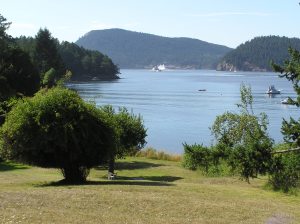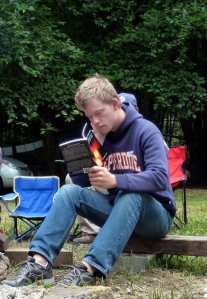Today’s post is contributed by Kim Balke. It is part of a paper that she wrote for her certification in Expressive Arts Therapy. I found the imagery so powerful that I asked Kim for permission to repost this. As Kim says the labyrinth is not just a prayerful tool it is also a tool of healing. This reflection seems a very good addition to this series on Tools for Prayer and the post of Walking the Labyrinth posted at the end of last week.
__________________________________________________________________________________
“Doula” (f.) is the Greek word for “servant” and it is a term used to describe a Midwife or a Birth Educator. I was curious to learn more about the work of Dayna Dueck a friend who is a Doula, a young mother of four children under 8 and wonderful portrait photographer.
One of the processes Dayna encourages in her birth education workshops has to do with the use of the labyrinth. Drawn from Greek mythology (Thesius) and practiced throughout the ages, across many cultures, walking a labyrinth is a strong metaphor for the birthing process. It aids a woman in the narration of her own heroic journey. I walked the labyrinth at St. Alban’s, Richmond, BC with Dayna, two other women, one toddler and one preschooler. As it turned out, these women were also birth educators, keen to learn about how Dayna draws upon the imagery in the labyrinth to support mothers in their pregnancy and child birth.
I had doubts and anxieties about going back to this time – why pick at a healing scab, re-open old wounds? Would I have to confront feelings of failure that I thought I had already worked through, feel judged – am I a “lesser mother” since birthing my boys involved a lot of technological/medical intervention? The following is an outline of the process I went through:
- Walk the stone paths of the labyrinth at St. Alban’s. (outside)
- Write down impressions, reflection on the experience (inside the church building).
- Workshop discussion led by Dayna about “The Hero’s Journey” – the metaphor of the labyrinth and the birthing journey.
- Pastel labyrinths – Dayna instructed us about how to draw our own labyrinth. We drew a “male” version (it is simpler to draw). We walked a “female” version. As we draw we mark personal symbols on the labyrinth at each phase; i.e. the threshold entrance (something to mark the “Ideal start to the ordeal”), markers for the traditions of family, personal and cultural history, applying what you learned about yourself, active labour and the Gate of Doubt/Transition, entering the Gate of Trust, reaching the centre and celebration of birth, the return journey (Dayna’s favourite part to talk with pregnant mother’s about), crossing the threshold/exit where the hero steps out of the labyrinth carrying her baby/another time of celebration, her new identity (as a woman who has given birth).
- At each phase Dayna encourages parents to discuss/reflect around their worries – to take the time/do not hurry this activity with partner, in group or in personal reflection.
- Re-walk the labyrinth outside, come back and reflect, discuss.
- Use the pastel labyrinth at home to visualize the (birthing) journey; keep it with you through labour and birth. It is a way of focusing, centering, meditating through contractions, narrating one’s own story and discovering meaning in one’s experiences.
My reflections and how I integrated this experience into my life are entitled, Greetings from a Labyrinth: an exercise in “non-focused awareness”. Enjoy.
Greetings from a Labyrinth: an exercise in “non-focused awareness”
The rose at the centre looks so close.
“I’ll be there in no time” I say, with each quick step taking me along as I move to the counterpoint/tense rhythm and energy of violins in the “Allegro”
of my mind. Cool air, sunlight on my head, a child’s laughter and the tap tapping of her skipping behind me. Good-bye to you, I must move on.
“Mama, I want to run!” over ponderosa pine needles and little gray pebbles below; oak leaves and a light breeze above in trees along the fence, like fingers admonishing, with Dayna’s words, “No, no, no short cuts – for you!” Even so, confidently, here I go!
I contemplate the curvature of space with each stone and cars and drivers, airplane zooms and other journeys surrounding me, remind me of time passing…crows cawing in the sky chide and chime as I turn to look at the shadow of my hair and shawl fringe. There I stumble off my path. “Watch your feet!” the sky creature’s chorus. Good-bye to you, I must move on.
Gray and brown back on track, past the water tank and garden hose and a memory of attempts at gardening tomatoes in too shallow Maritime soil-“Fare thee well, Susan
”, I sigh, “If not later…later”.
Along the outer edge, not sure how I got so far away from the rose centre, most distracted now at this “Gate of Doubt”
where Son Terra apartments and other pink roses in a garden call to me through more cars, more roads, endless sky and quicksilver clouds
that gather like minnows in rapids to carry me away and there is even someone going the other way-what? “Keep going…watch your feet” crows call comes to my rescue until I step through the Gate of Trust
, one step, one breath at a time until I am centred, turning inside a rose, seeing all before me, a crescendo of colour and sound. I greet the melodious day with a Kimesque note of “Hello”, pause, and then journey outward.
On my return I find the sun has dried up the pathway with a powdery stone residue left behind, blurring the lines, like chalk pastels on my paper labyrinth. My journey was special.
Every journey is special! What does that mean? Even though birthing is a well trodden path, each woman’s experience is her own- a one of a kind strength, a pure whole note carried on the wind, a sound only she can make, moving on into hello.
Filed under: Christianity, Health, life, Prayer, resources, spiritual practices, spirituality | Tagged: doula, expressive arts therapy, Kim Balke, labyrinth for healing, labyrinths, Prayer, spiritual practices, walking the labyrinth | 1 Comment »


























